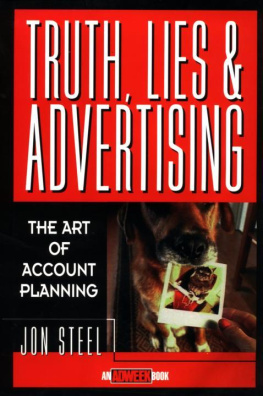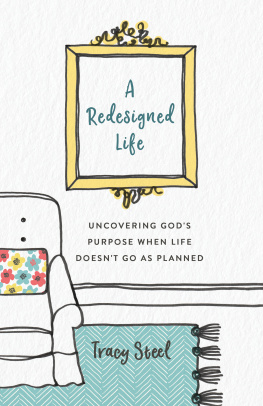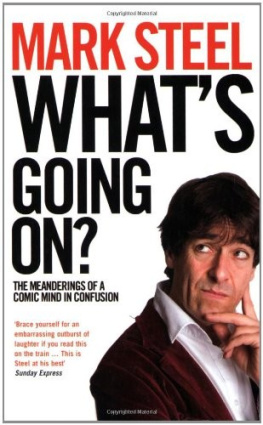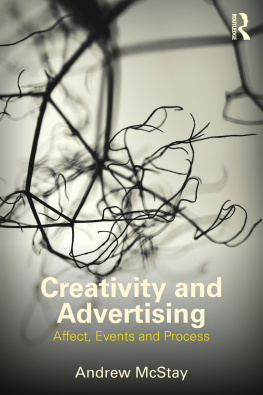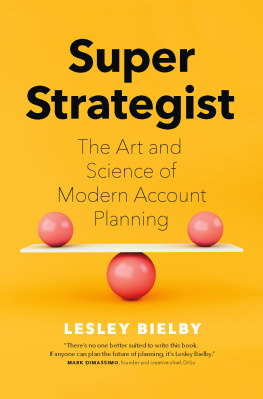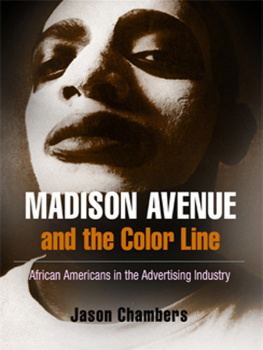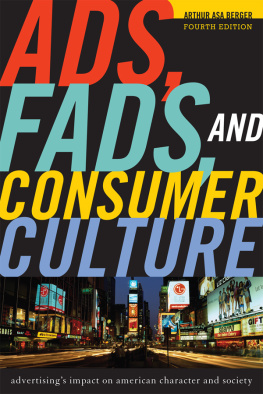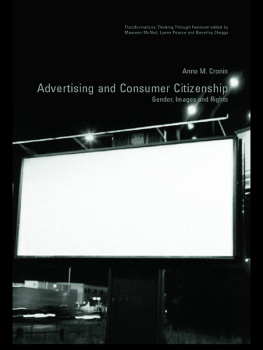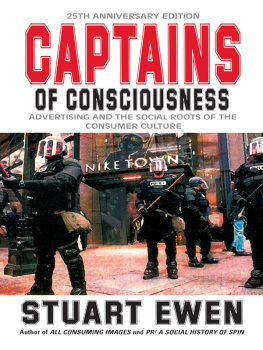Adweek Books is designed to present interesting, insightful books for the general business reader and for professionals in the worlds of media, marketing, and advertising.
These are innovative, creative books that address the challenges and opportunities of these industries, written by leaders in the business. Some of our writers head their own companies, others have worked their way up to the top of their field in large multinationals. But they share a knowledge of their craft and a desire to enlighten others.
We hope readers will find these books as helpful and inspiring as Adweek, Brandweek, and Media week magazines.
Disruption: Overturning Conventions and Shaking up the Marketplace, Jean-Marie Dru
"Hey, Whipple, Squeeze This!':. A Guide to Creating Great Ads, Luke Sullivan
Under the Radar: Talking to Today's Cynical Consumer, Jonathan Bond & Richard Kirshenbaum
Eating the Big Fish: How "Challenger Brands" Can Compete Against Brand Leaders, Adam Morgan






Thie book Li dedicated to Ethel Alice Morris 1904-1993
Contents
Firing Blanks
The Failure to Involve Consumers in Advertising Communication
Account Planning and the New Consumer Alliance
Advertising Follows Research ... in the Wrong Direction
Uncovering the Truth and Stimulating Creative Ideas through Research
The Importance of Creative Briefing
The Perils of Researching Rough Creative ]dead
"got milk?"
Introduction
Firing Blanks
Is advertising worth saving? From an economic point of view I don't think that moat of it is. From an aesthetic point of view I'm damn sure it'd not; it id thoughtless, boring, and there cs dimply too much of it.
Howard Luck Gossage
More than 30 years ago, Howard Gossage, a legendary San Francisco advertising man, gave an interview to Time magazine in which he said of advertising, "I don't know a single first class brain in the business who has any respect for it." Afterward, he was appalled that none of his industry colleagues were upset by his remark and concluded that it was because they all agreed with him but were too lazy to do anything that might bring them some of that missing respect.
More recently, in 1992, a Gallup poll asked consumers across America to rate 26 different professions according to the degree to which they trusted them.
At the top of the list, with 65 percent of respondents giving them a "very high" or "high" ethical rating, were pharmacists, closely followed by the clergy, college teachers, medical doctors, and policemen. Farther down the list, journalists lay in eleventh place with an ethical rating of 26 percent, senators and lawyers were sixteenth and seventeenth respectively, and real estate agents and congressmen placed nineteenth and twentieth. Languishing in twenty-fifth place, with only an 8 percent ethical rating, just behind insurance salesmen, were advertising practitioners. Only one profession received a lower ethical rating, and I would thus like to suggest that all advertising people reading this should pause for a moment, raise their eyes to the heavens, and give thanks for the very existence of car salesmen.
In my first year working in the United States, I once naively suggested that a commercial my agency had produced might play well in movie theaters. Both my agency colleagues and clients looked at me aghast. "Oh God, no," I was told. "People would go nuts. The movies are the one place where they're not assaulted by advertising. They go there to escape, and we don't want to be the ones to piss them off."
In the eight years that have passed since then, I have come to understand why they felt that way. As I travel around the country conducting research for the agency, talking to people from all walks of life and economic strata, I hear consistent and heartfelt criticism of the way that advertising invades all parts of their lives. Their TV and radio programs are interrupted, their magazines are difficult to read because of all the ads that consume the features, their mailboxes are routinely jammed with unsolicited material, blimps and planes carry messages over their cities, moving images are projected onto the sides of buildings, and their dinnertime conversations are interrupted by telemarketers. The American public is surrounded, with the movie theater as its final line of defense.
In 1990, a study conducted by The Economist estimated that the average American is exposed to 3,000 commercial messages a day in "all media." Now I'm always suspicious of statistics, especially averages, because if you think about it, the "average American" has one breast and one testicle, but I wouldn't deny that we all see a lot of advertising. Maybe 3,000 messages is overstating it; other studies are more con servative, estimating anywhere between 150 and 300 exposures in just TV, radio, magazines, and newspapers.
Although I may really have seen or heard 300 messages yesterday, I can remember no more than about 10 of them. Of those, I liked and connected to maybe only two or three.
A host of other research suggests that I am not atypical. With remote control units permanently trained on every commercial break, radios on for background noise, and people flicking randomly through magazines, the majority of those 300 potential exposures just vaporize. People do not even need a remote control to successfully ignore advertisements-we have evolved to the point where we can recognize commercials that concern us or interest us and grant them at least a few seconds' attention, while ads that fall into neither of those categories are prevented from taking up valuable brain space by our newly developed mental deflector shields.
It's not that advertising is failing to present itself to its target. It appears in our homes with monotonous regularity, but when it gets there, it often fails to make the necessary connections. I suppose that if advertising were a person (to use a projective technique popular among moderators of qualitative research), it would be a person with a very low sperm count.
A GRENADE TO CATCH A TROUT
The purpose of this book is not to argue that advertising does not work at all, because there is a mountain of evidence to suggest that it does. Companies with higher advertisingto-sales ratios tend to dominate in their categories and on the whole are more profitable. Companies who have advertised during and after recessions have grown at the expense of competitors who have reduced their budgets. Advertising helps turn products into brands; and, in turn, brands build a company's value, sustain higher market share and higher margins, and provide a powerful barrier to competitive entry. All those things are true, and I could have filled this whole book with examples of advertising's effectiveness in building sales, share, and profitability.

